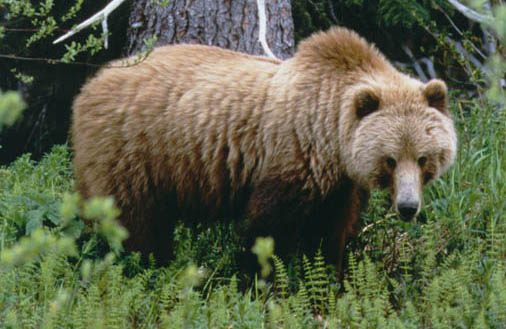
August 25, 2012

Editorial: Sierra Kills ~ Folklore, Makelore, Or Fakelore?
Blending the worse parts of fakery and folklore, “fakelore” is an unwelcome friend to cryptozoology and hominology. Presenting itself as imitation folklore, various incidents come along that look like they may be new examples of traditional Sasquatch lore. But are they? Bigfoot fakelore actually turns out to be quicksand, which is attractive but looks too good to be true. And, indeed, most often, it is.
So, editorially, let me propose we pause and ask the question: Is the Sierra Kills melodrama more science or more fakelore?

Take for instance, this alleged piece of physical evidence. It appears trust, true believing, and faith are the main supporting constructs for all of us to think that this “Bigfoot steak” is actually part of a Sasquatch versus something more logical. Some like Jeff Meldrum’s suggestion, that this is coyote fur, or perhaps, from appearance, part of the skin of a grizzly bear (shown).

Or may be it is a piece of bison hide (shown).

Or maybe, my own personal favorite, this “steak” could be nothing more than a dirty piece of the tanned hide of a musk ox, which tend to have well-developed guard fur (hairs) + human skin cells.

Image sources for grizzly; for bison; for musk ox.
One of the enduring components about pursuing land-based cryptids is that physical evidence does exist for those possible new species that appear to have a basis in reality. Regarding Bigfoot/Sasquatch, there is the Patterson-Gimlin footage, which has been analyzed. There are the P-G footprints from the 1967 footage’s trackway that are studied. The combined mixture of elements (in the context of Native traditions and eyewitness accounts) come into play for examination for the Patterson-Gimlin event. Hair samples from other cases and footprints, as well as the unusual items, like the Skookum body cast, allow for a deeper, but physical look, at these cryptids.
Part of the problem of the so-called “Sierra Kills” (see here, here, and here) situation, after all, seems to be in its elusiveness, doesn’t it? The essence of this incident turns out to be nothing more than an elaborate story with a foundation of faith, tales, and less. Promises of forthcoming DNA analyses, presentations of testimonies based on the personalities of one or two individuals, and little else tends to look remarkably like folklore evolving into fakelore, not evidence. The more the “red” editing of the statements occurs, the larger the doubts grow.

Mr. Robert Lindsay, in his blog, has made statements like this one, “This is the first full body drawing ever of a Bigfoot that has been confirmed by DNA evidence.”
Such statements are so full-blown and over-the-top that they appear to be bound to disappoint.
Is this the first full body drawing of a Bigfoot ever – confirmed by DNA evidence? Where is the final proof? Where is the DNA evidence in a journal, shared among scientists, and openly available to researchers?
Commitment to evidence should never rely on blind faith. More disclosure and less promises would be appreciated.
About Loren Coleman
Loren Coleman is one of the world’s leading cryptozoologists, some say “the” leading living cryptozoologist. Certainly, he is acknowledged as the current living American researcher and writer who has most popularized cryptozoology in the late 20th and early 21st centuries.
Starting his fieldwork and investigations in 1960, after traveling and trekking extensively in pursuit of cryptozoological mysteries, Coleman began writing to share his experiences in 1969. An honorary member of Ivan T. Sanderson’s Society for the Investigation of the Unexplained in the 1970s, Coleman has been bestowed with similar honorary memberships of the North Idaho College Cryptozoology Club in 1983, and in subsequent years, that of the British Columbia Scientific Cryptozoology Club, CryptoSafari International, and other international organizations. He was also a Life Member and Benefactor of the International Society of Cryptozoology (now-defunct).
Loren Coleman’s daily blog, as a member of the Cryptomundo Team, served as an ongoing avenue of communication for the ever-growing body of cryptozoo news from 2005 through 2013. He returned as an infrequent contributor beginning Halloween week of 2015.
Coleman is the founder in 2003, and current director of the International Cryptozoology Museum in Portland, Maine.
Filed under Bigfoot, Breaking News, Cryptomundo Exclusive, CryptoZoo News, Footprint Evidence, Forensic Science, Sasquatch